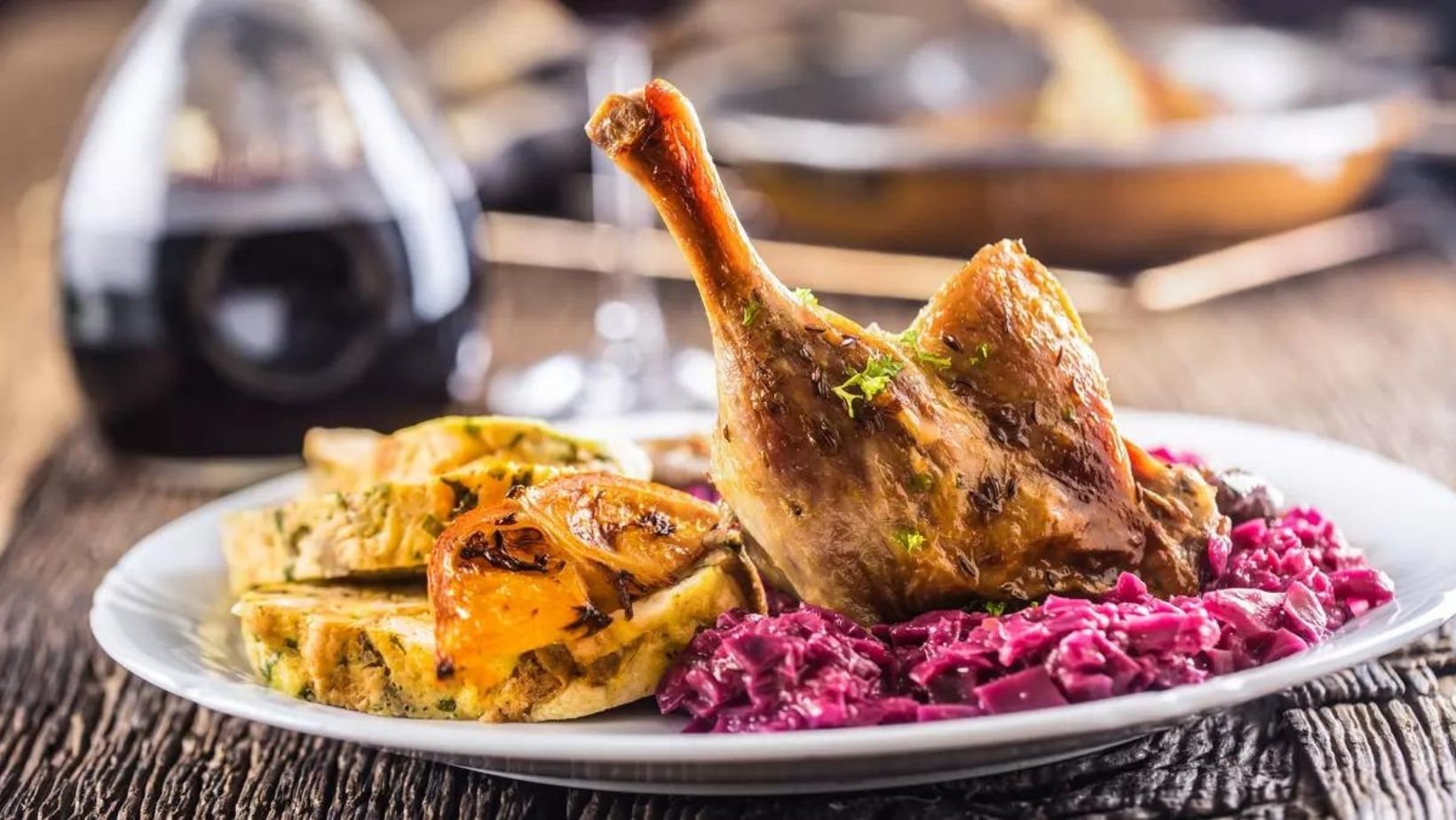St. Martin’s Day, which Czechs celebrate on November 11, is a holiday of good food and drink.
Autumn slowly alternates with winter, and it begins to snow. In the past, the economic year was ending at this time, and the landowners were preparing a feast for their people as a form of thanks, when they were also paid out their wages.
And what about today? Today, the feast of St. Martin is a great opportunity to bring a little joy to life! Traditionally, fattened geese are roasted on 11 November, and the first bottles of young wine open at exactly 11:11 am.
St. Martin wines are fresh and young, as they only have a few weeks to mature. They are very clear and have a lower alcohol content.
For a wine to bear the St. Martin brand, it must be made in the Czech Republic from grapes of the varieties Müller Thurgau, early Roter Veltliner, Moravian Muscat, Blauer Portugieser, Svatovavřinecké (St. Laurent) and Zweigeltrebe and undergo an evaluation by an independent committee.
It blind tastes the properties of the wine, such as appearance, aroma, taste, and overall impression of the wine. So if you buy wine with the St. Martin label, you can be sure that you will be getting quality young wine from South Moravia, Mělnicko or other areas in Central or Northern Bohemia.
Svatomartinský košt (St. Martin wine tasting) – start of the celebrations
The Czech association of winemakers, called the Wine Fund (Vinařský Fond), is once again planning the largest tasting of St. Martin wines in the Czech Republic on 11/11 at 11 am on Brno’s Náměstí Svobody square. The St. Martin wine tasting traditionally offers 100 samples of St. Martin wines from 100 different winemakers.
But you can also look forward to more tastings, i.e. wine tastings and St. Martin’s Day processions throughout the Czech Republic. For example, in the Prague Botanical Garden, in Český Krumlov and in Jihlava.

St. Martin’s Day in restaurants
You can be sure that almost every restaurant around mid-November will be offering its visitors a special St. Martin’s Day menu.
What does it feature? According to a tradition that has lasted for several centuries, geese were always roasted in the autumn, fresh cabbage was processed, and wine or beer was drunk. And today’s restaurants and pubs remain faithful to these basic ingredients.
Typically, you will be served liver pâté as an appetizer, followed by a strong broth with liver dumplings and noodles, which the chefs usually leave to simmer overnight, with the main course being roast goose with red or white cabbage and dumplings.

A cornucopia in the market and gallery
City markets are not far behind either. There are fewer of them this year compared to previous years, due to the continuing uncertainty about the pandemic situation. Even so, some of the markets will open their gates.
In Prague, for example, the farmers’ market on Kubánské Náměstí square. Here, on November 13, from 10 am to 6 pm, you can taste young wines, roast goose, and other delicacies from this year’s harvest at the St. Martin’s Day festivities. In Kutná Hora in Central Bohemia, the St. Martin’s Feast will take place directly in GASK, the local famous gallery.
On November 13, you can look forward to feasts, wine tastings or traditional folk music, which are all an integral part of any good wine festivities.
-
NEWSLETTER
Subscribe for our daily news








